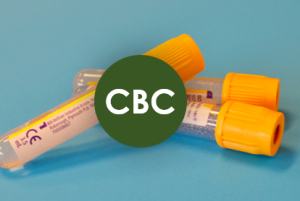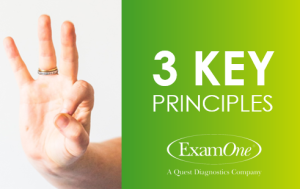
In my first blog post about the life insurance industry, I painted a realistic, but bleak picture of the life insurance industry and some of the questions we face. Like many things in life, the answers are not always clear. We tend to be able to find plenty of blame to go around, but we aren’t quite as diligent about looking for the answers. Of all the questions posed in the first article, I don’t think we can identify a root cause in any one area. All of us in the industry have had our part in the decline. It doesn’t seem like we ever got ahead of the curve; we were looking to answer questions that had already become obsolete.
We spent years debating if we were agents or financial planners, how the sale looked and who cared (or more importantly, who didn’t). We wanted to be all things to all consumers and then it was too late. The consumer didn’t care what we called ourselves. They wanted to know they could trust us. We let them down as we all chased the affluent, which would have been great if the affluent were the only ones needing life insurance.
So what did we do? We told our actuaries and underwriters the reason we couldn’t write more business was that consumers wanted Simplified Issue. I haven’t seen any research that indicates the middle-market wants to pay more. Our research has indicated they want a simple process. They want to pay less to someone they trust.
What did the actuaries and underwriters do? They gave into what distribution said they needed to help them sell more policies. They were just trying to serve their customer, the agent. The reinsurance companies jumped right in to support the products, never stopping to check if it was what the applicant wanted.
While companies everywhere were leveraging the internet to reach more consumers, we were paralyzed by the complicated electronic signature. I hardly sign anything other than in some electronic fashion anymore, yet many insurers are still struggling with this technology.
Surely when the economy improved we would sell more life insurance. No wait, when the economy is bad people need life insurance. No wait, when something bad happens people will be reminded of their mortality, and be motivated to get a policy. Did we become an industry waiting for something horrific to happen in order to sell life insurance? No, we thought of innovative ways to make our company stand out above the rest.
I believe there is hope. We can turn this around. We can regain the stature the industry once claimed. We need to get down to the business of selling life insurance. We need to focus on what that means to people. We need the home office and the field to be in sync. We need the supporting service-provider community to put the focus on building trust throughout the supply chain. Is it possible? Yes. Is it hard work? Yes. We need to give applicants a choice and sense of trust and we need to give agents happy applicants.
The way the consumer thinks, acts, and processes information is different and more exciting than ever before. We need to stop and look at the data. Just like they talked about Wayne Gretzky skating to where the puck was going to be, we need to position ourselves where the consumer is going to be.
So where is the consumer today?
- 266 million Internet users in North America
- 83% of adults have cell phones
- 35% of adults have smartphones
- 27% of adults have no landline (23% more plan to give it up)
- 40% of smartphone owners pay to have voicemails transcribed to emails
- Text messages are read by 94% of recipients
- Average text message read within four minutes versus 48 hours for email
- 72% of adults send/receive at least one text/day
- 50% of text users are age 35+
- 3.5 million text messages sent per minute in the U.S.
- Desktop ownership declining, four mobile phones sold for every PC
Source: Boston Consulting Group http://www.txtstop.com/sms_statistics.cfm


In other words, they are not sitting at the kitchen table anymore, and they don’t want to be sold like they used to be sold. Is there hope? Of course, there is always hope.
We have to embrace technology to reach the consumer of today. We have to reach consumers in new and creative ways. Sounds easy, let’s just set up a website and maybe a Facebook page. I might even send a tweet.
I think we are still coming up short if we simply think embracing technology will cure what ails us. What ails us is something much deeper, but technology can be used to accelerate how we reach our consumers in new and trusted ways. Instead of shifting blame within our own industry, maybe we need to look to other industries and markets to see how they have adapted to change and how they stayed successful.
In our next post, we will explore how identifying our “Why” might just help save us all.




















In my first blog post about the life insurance industry, I painted a realistic, but bleak picture of the life insurance industry and some of the questions we face. Like many things in life, the answers are not always clear. We tend to be able to find plenty of blame to go around, but we aren’t quite as diligent about looking for the answers. Of all the questions posed in the first article, I don’t think we can identify a root cause in any one area. All of us in the industry have had our part in the decline. It doesn’t seem like we ever got ahead of the curve; we were looking to answer questions that had already become obsolete.
We spent years debating if we were agents or financial planners, how the sale looked and who cared (or more importantly, who didn’t). We wanted to be all things to all consumers and then it was too late. The consumer didn’t care what we called ourselves. They wanted to know they could trust us. We let them down as we all chased the affluent, which would have been great if the affluent were the only ones needing life insurance.
So what did we do? We told our actuaries and underwriters the reason we couldn’t write more business was that consumers wanted Simplified Issue. I haven’t seen any research that indicates the middle-market wants to pay more. Our research has indicated they want a simple process. They want to pay less to someone they trust.
What did the actuaries and underwriters do? They gave into what distribution said they needed to help them sell more policies. They were just trying to serve their customer, the agent. The reinsurance companies jumped right in to support the products, never stopping to check if it was what the applicant wanted.
While companies everywhere were leveraging the internet to reach more consumers, we were paralyzed by the complicated electronic signature. I hardly sign anything other than in some electronic fashion anymore, yet many insurers are still struggling with this technology.
Surely when the economy improved we would sell more life insurance. No wait, when the economy is bad people need life insurance. No wait, when something bad happens people will be reminded of their mortality, and be motivated to get a policy. Did we become an industry waiting for something horrific to happen in order to sell life insurance? No, we thought of innovative ways to make our company stand out above the rest.
I believe there is hope. We can turn this around. We can regain the stature the industry once claimed. We need to get down to the business of selling life insurance. We need to focus on what that means to people. We need the home office and the field to be in sync. We need the supporting service-provider community to put the focus on building trust throughout the supply chain. Is it possible? Yes. Is it hard work? Yes. We need to give applicants a choice and sense of trust and we need to give agents happy applicants.
The way the consumer thinks, acts, and processes information is different and more exciting than ever before. We need to stop and look at the data. Just like they talked about Wayne Gretzky skating to where the puck was going to be, we need to position ourselves where the consumer is going to be.
So where is the consumer today?
Source: Boston Consulting Group http://www.txtstop.com/sms_statistics.cfm
In other words, they are not sitting at the kitchen table anymore, and they don’t want to be sold like they used to be sold. Is there hope? Of course, there is always hope.
We have to embrace technology to reach the consumer of today. We have to reach consumers in new and creative ways. Sounds easy, let’s just set up a website and maybe a Facebook page. I might even send a tweet.
I think we are still coming up short if we simply think embracing technology will cure what ails us. What ails us is something much deeper, but technology can be used to accelerate how we reach our consumers in new and trusted ways. Instead of shifting blame within our own industry, maybe we need to look to other industries and markets to see how they have adapted to change and how they stayed successful.
In our next post, we will explore how identifying our “Why” might just help save us all.